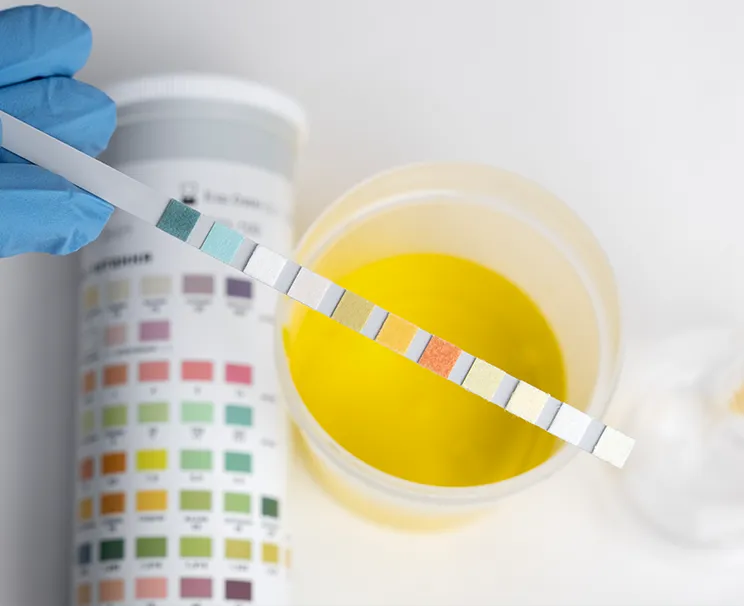Hemogram reference values may vary depending on age, gender, and certain physiological conditions. In general, for an adult individual, the red blood cell count should be between 4.7-6.1 million/µL for men and 4.2-5.4 million/µL for women.
Hemogram reference values considered to be 4,500-11,000/µL for white blood cells and 150,000-450,000/µL for platelets. Values falling below or above these ranges may indicate infections, anemia, or a tendency to bleed. Hemoglobin and hematocrit levels are also included in the evaluation and play a critical role in diagnosing diseases.
Other values assessed in a complete blood count:
What Are Hemogram Reference Values?
To evaluate overall health status, the hemogram test is frequently administered. This test analyzes the quantity and distribution of various cells in the blood. Physicians use the results of a complete blood count as a fundamental indicator in the diagnostic process. In this way, many health issues that progress silently can be detected at an early stage.
The complete blood count, also known as the hemogram test, separately measures red and white blood cells as well as platelets. These values may vary based on an individual’s age, gender, and physiological state. For this reason, the results should be interpreted alongside the clinical picture. A result outside the reference range does not always indicate disease but may require further evaluation.
The blood cells measured in a hemogram also provide information about the immune system, oxygen transport capacity, and clotting functions. Low or high values can indicate a range of conditions from infections to anemia. This test, completed quickly in a laboratory setting, is considered an essential part of routine health checkups.
The number of red blood cells (erythrocytes) directly affects oxygen transport in the body. A low count may signal anemia, while a high count could indicate cardiovascular problems. Therefore, hemoglobin and hematocrit levels should also be closely monitored.

Key parameters in a complete blood count include:
Getting regular complete blood counts supports the prevention of many diseases and helps ensure a healthier life. Early diagnosis makes the treatment process more efficient and quicker. Therefore, individuals with chronic conditions are advised to undergo regular checkups.
When Is a Hemogram Test Necessary?
The hemogram test is a key diagnostic tool for identifying and monitoring various health conditions. Especially when certain symptoms or clinical findings are present, doctors may request this test.
Some of the most common uses of complete blood count include:
This test can uncover not only existing diseases but also hidden hematological disorders. It can provide clues especially in bone marrow-related diseases that disrupt blood cell production.
The results of a complete blood count are also regularly monitored to assess the side effects of certain medications. In this way, it serves as both a diagnostic and follow-up tool.
Frequently Asked Questions
The normal values in a hemogram include reference ranges for red blood cells, white blood cells, and platelets. These values may vary based on age, gender, and health status.
Values significantly below or above normal may be dangerous. For example, a WBC count below 3,000/µL could indicate serious immune problems.
Hemoglobin levels in adults should be 13.8-17.2 g/dL for men and 12.1-15.1 g/dL for women. All hemogram parameters are expected to fall within the reference range.
Hemoglobin, hematocrit, white blood cell count (WBC), red blood cell count (RBC), and platelet count (PLT) are among the most important blood values.
The test evaluates parameters such as WBC, RBC, HGB, HCT, MCV, MCH, MCHC, and PLT.
Elevated values may indicate infection, inflammation, dehydration, bone marrow disorders, or other health issues.
During general checkups, and when experiencing fatigue, dizziness, fever, anemia symptoms, or as requested by a physician.
Yes, the complete blood count is commonly referred to as a hemogram test, and both assess the same parameters.
For more detailed information about hemogram tests and to receive quick results, you can contact Denge Tıp.










